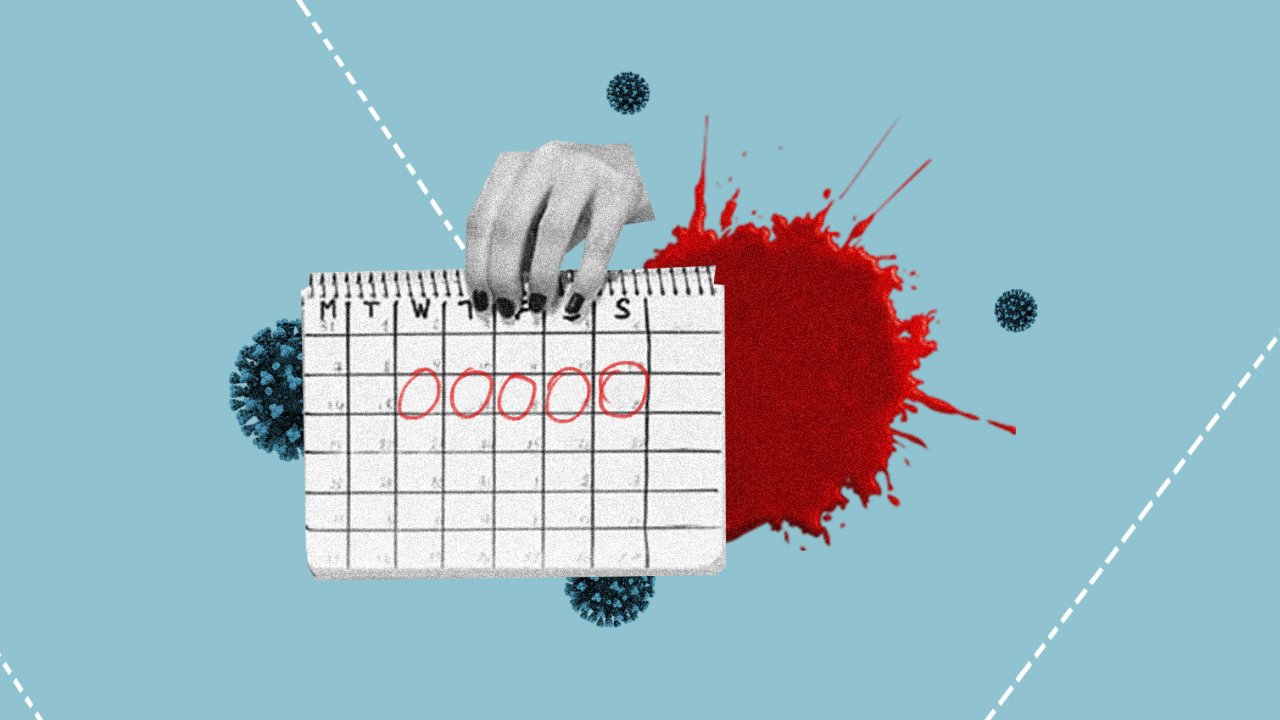Where Does That Sanitary Pad Go Once I Use It?
This article was originally published on OffPrint.
A few weeks ago we were travelling from Bangalore to Hyderabad by train. While waiting in the lissom corridor for the toilet to be free, the bogey door suddenly swung open and we saw a mother carrying her child and holding what seemed to be a soiled diaper wrapped in newspaper at first sight. In unison, we all looked at the tiny space meant to be a rubbish bin under the sink, spilling from the brim. Within microseconds, the soiled packet was flying out of the train. Shell shocked, we felt compelled to ask her why she couldn’t have gone to the next bogey and thrown her trash in the space allocated there!
The woman glowered and scowled and told us indignantly that it was her sanitary napkin and she couldn’t be bothered to walk around the train to dispose it.
[inlinetweet prefix=”” tweeter=”” suffix=””]
“How long could I have held on to that thing”
[/inlinetweet], she said with a grimace.
It is safe to say that this instance is probably not the only time someone has thrown out personal trash. The very act of menstruation is shrouded in secrecy. Sanitary pad and tampon producers have been focusing awareness campaigns on using their products for a healthy, confident, and sugar overdosed woman who will necessarily wear white pants on her period day. Unfortunately, there has not even been a ‘whisper’ of waste management related to these products once used by women to ‘Stayfree’.
India has nearly 355 million women in the menstruating age bracket and on an average, each woman spends 3500 plus days of her life menstruating. The AC Nielsen’s study places the current sanitary napkin usage at about 12% of this 355 million which in itself is generating around 9000 tons of menstrual waste per month. It doesn’t take a genius to do the math to comprehend the waste implications of 355 million women using commercially made plastic sanitary napkins which take about 500 years to decompose.
Government policies to improve menstrual hygiene and health have been minimal at best. These interventions have focused largely on the distribution of low cost sanitary napkins in schools and rural areas. Like with most things, it is not in the nature of a welfare state to think through their next step. There is little or no follow through on what to do after using these napkins.
Does it go into trash cans that are picked up by the municipal corporation? Where is it taken after? The landfill? Seems logical so far. What happens once it reaches the landfill? No clue? We’re pretty stumped too. (But if you know, please email us!)
The entire use to disposal cycle of the sanitary napkin has gaping holes. At the face of it, menstrual waste seems to resemble discovering a new species in 2016; the kind one is unable to classify as either amphibian or reptile.
At the core of how to dispose of something is to know what the something is classified as. According to wen.uk, the materials used in sanitary napkins, tampons, and panty-liners often use a mixture of cotton and rayon, plastic polymers, bleached wood pulp, and super-absorbent gel (polyacrylate). The organic material (wood pulp and any cotton present) often contain dioxins and furans, a highly toxic environmental pollutant. The contents of the menstrual hygiene products are what makes the laws extremely dubious. Strangely, these products have no clear method of disposal because they fit into multiple brackets of waste.

Karnal Byepass Dumping Ground
Once we move past the mystery of what sanitary menstrual waste is classified as, we enter the magical world of disposal. The law lacks clarity on two accounts – the segregation of sanitary waste, and its subsequent disposal. In respect of the first account, it is immediately obvious that wrapping sanitary waste in a newspaper does not lead to automatic segregation of sanitary waste from other waste material. This has led to the problem of rag pickers or waste segregators not being able to differentiate sanitary waste from other kinds of waste. In fact, to know what is inside a wrapped newspaper ball, a segregator will need to open the wrapping, which in itself renders the wrapping-up of the waste pointless. Since contact with such waste by segregators remains, this also has the potential to lead to spread of infections and disease amongst waste pickers/segregators.
So what does a waste collector/ segregator do in this situation? Probably let the trash remain until a mountain is formed out of a molehill.
Ah, the scenic view of rolling hills, where your olfactory senses are cued into its existence before your eyes lay sight on the filth, plastic bottles, wrappers, the rest of that mango you ate yesterday.
What happens once it reaches the landfill? How is it segregated? Are sanitary napkins put together with other plastics? Or are they put with the bio-waste?
….
Read the complete article on Offprint.
Image credits:- Offprint.
3





